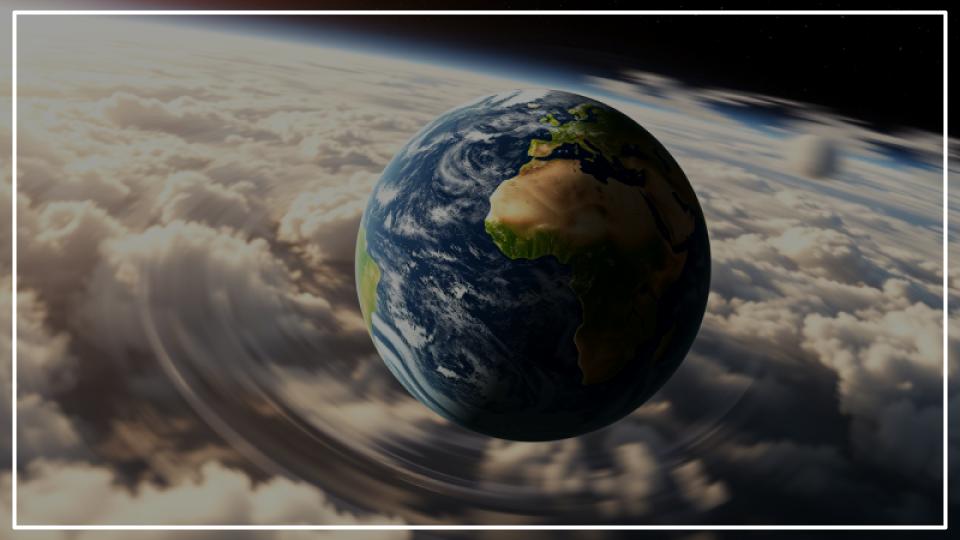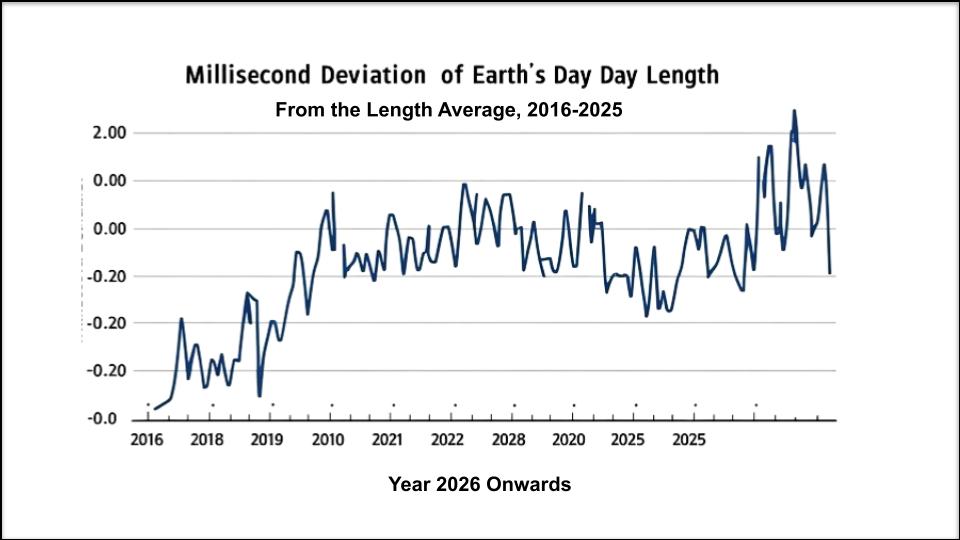
The Earth is rotating at an accelerated pace, a trend that scientists expect will lead to several of the shortest days on record this July and August. This subtle but significant quickening of our planet’s spin, measured in milliseconds, is driven by complex dynamics deep within the Earth’s molten core and is forcing international timekeepers to confront an unprecedented decision: whether to subtract a second from our global clock.
While the public will not feel the change, the cumulative effect of these shorter days has tangible consequences for modern technology. Systems that rely on hyper-precise time, including GPS navigation, financial market transactions, and satellite communications, could face disruptions. The organization responsible for global timekeeping, the International Earth Rotation and Reference Systems Service (IERS), is closely monitoring the situation.
Why the Earth is Spinning Faster
For decades, the long-term scientific consensus was that Earth’s rotation was gradually slowing down, primarily due to the gravitational pull of the moon creating tidal friction. This led to the periodic addition of a “leap second” to keep atomic clocks in sync with the planet’s rotation. The last one was added in 2016.
However, since 2020, that trend has reversed. Scientists have observed a consistent acceleration, resulting in progressively shorter days. On July 5, 2024, the planet experienced its shortest day ever recorded since the advent of atomic clocks, completing a rotation 1.66 milliseconds less than the standard 86,400 seconds. Projections from organizations like timeanddate.com suggest similarly short days will occur around July 9, July 22, and August 5, 2025, with one day potentially being 1.51 milliseconds shorter than average.
The primary driver of this acceleration is believed to be the behavior of Earth’s massive, liquid outer core.
“Nobody expected this,” said Leonid Zotov, a researcher at Moscow State University, in an interview with timeanddate.com. Zotov and other geophysicists theorize that variations in the flow of the molten iron core are not perfectly synchronized with the planet’s solid mantle. A recent slowing of the core’s own rotation could be transferring angular momentum to the solid Earth, causing the surface to spin faster, much like a figure skater pulling their arms in to increase their speed.

A Counterintuitive Climate Twist
Complicating this phenomenon is the impact of global climate change. The rapid melting of glaciers and ice sheets at the poles is having an opposite, braking effect on the planet’s rotation.
A study published in the journal Nature by geophysicist Duncan Carr Agnew from the University of California San Diego revealed that the redistribution of mass from the poles towards the equator is slowing Earth’s spin. As water from melting ice flows into the oceans and bulges slightly at the equator, it decreases the rotational speed.
“Global warming has proceeded to the point that its effects are showing up in how fast the whole Earth rotates,” Agnew stated. “This change in rotation has never been seen before.”
This slowing effect from melting ice is significant enough to have masked the true extent of the acceleration from the core. According to Agnew’s research, without the influence of melting ice, the need for a time adjustment would have arrived even sooner.
The Negative Leap Second Dilemma
The cumulative effect of milliseconds lost each day is pushing Coordinated Universal Time (UTC), the world’s time standard, further out of sync with astronomical time (UT1), which is based on the Earth’s actual rotation. To correct this, timekeepers may need to implement the world’s first-ever negative leap second.
Instead of adding a second to the clock (e.g., 23:59:60), a negative leap second would involve skipping a second entirely, with clocks jumping from 23:59:58 directly to 00:00:00.
While this sounds simple, it presents a major challenge for the technological infrastructure that underpins modern society.
- Software and Networks: Many computer systems and networks are programmed to handle the addition of a leap second but have never been tested for a subtraction. This could lead to software crashes, data corruption, and synchronization errors.
- Financial Systems: High-frequency trading algorithms rely on timestamping events to the microsecond. A skipped second could introduce chaos and disputes.
- Navigation: Global Navigation Satellite Systems (GNSS), including GPS, depend on a stable and predictable time scale. An unprecedented adjustment could introduce positioning errors if not handled perfectly by all receivers.
The potential for disruption has led to a major debate within the international scientific community. In 2022, the General Conference on Weights and Measures voted to abandon the leap second altogether by or before 2035, allowing atomic time and astronomical time to drift apart more significantly. However, a solution for the interim period is still under discussion. The braking effect of melting ice has delayed the decision point, likely pushing the need for a negative leap second from a projected 2026 to around 2029.
The final paragraphs of a news article provide the least critical, forward-looking information. This allows readers who stop early to still retain the most important facts.
Scientists emphasize that the current acceleration is part of a complex and unpredictable interplay of forces within and on the surface of our planet. While the long-term trend over millennia points to a slowing Earth, these shorter-term fluctuations highlight how dynamic and active our world remains. The global scientific community will continue to monitor the planet’s spin with atomic precision, navigating the delicate balance between the time we keep and the time nature dictates.
How to Watch Jupiter and Venus in a Close Celestial Encounter This Week
